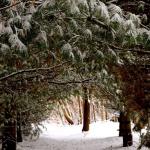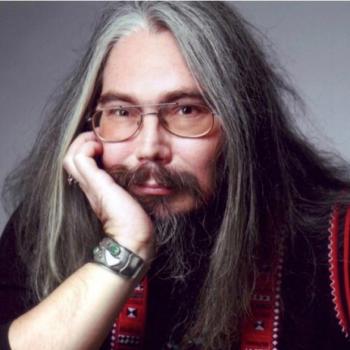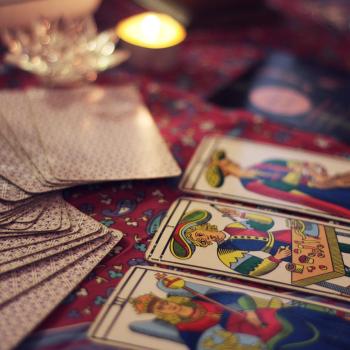A Sanctuary for Pagans and Polytheists
The grounds of Tredara, is not only home to many local land spirits and sacred sites, but also the home of friends and colleagues Ian Corrigan and Liafal. Both longtime members of the wider Pagan community, specifically Ár nDraíocht Féin: A Druid Fellowship. The site of Tredara is located inconspicuously in Northeastern Ohio near Lake Erie. It is a private and wooded 17-acres of land dedicated to the practice of nature worship, magic and honoring the gods. The 17-acre piece of land is located in a town called Madison, which has a population just over 3,000 as of 2016.
The Tredara Hearth Society is a collection of volunteers and other dedicated individuals who have worked to bring this sacred space to the wider Pagan community. They are an organization committed to modern Neo-Paganism and natural religion. Through their work they have succeeded in bringing this Pagan Worship and Cultural Center to manifestation. We are blessed to live in a time again where we can come together and worship outdoors without fear of being accused of heresy or worse. For decades leaders in our movement have fought to dispel negative stereotypes surrounding nature based religion through education and outreach. With the advent of the internet and so many amazing publications over the past 40 years have added new layers of depth to our practice, and have given us the tools to better define who we are.
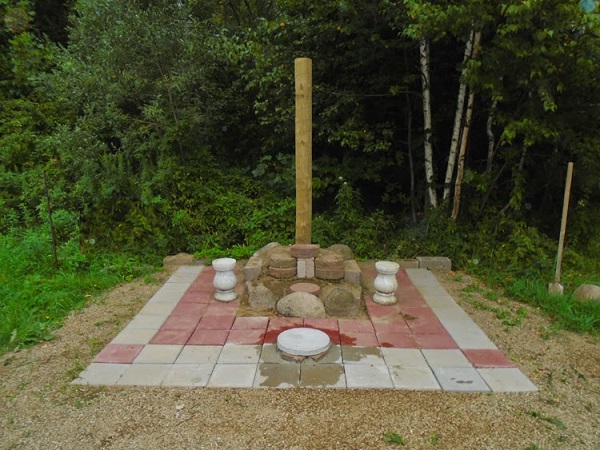
The Shrines of Tredara
In Mr. Corrigan’s particular branch of druidry a conventional triadic cosmology is used to divide the types of spirits that are honored. Very similar to the divisions within other cosmologies, this triune categorization of ancestors, gods, and land spirits is common and instinctual to many practitioners. Thus, the shrines of Tredara are designated by the same distinctions, resulting in a mound shrine for the dead, a classical nemeton for the gods, and a Tricephallic spirit totem for the landwights.
Tredara is a spiritual retreat and a natural sanctuary. Well kept glades, groves and greenery line paths that intersect at various crossroads and lead to the shrines around the site. The land itself being pre-conscecrated and blessed through ritual preparations is a haven for nature’s multitude of beings. Each sacred site is a place of power placed with intention and intuition, further ritual and ceremony prepares each plot for the shrine to be built. Using traditional designs and classical techniques of construction these places of devotion and reflection have that eldritch pagan feel, as if they had always been part of the land. These altar spaces are not only build on the land, but into it as well. Capstones hide the openings of offering shafts built into the ground below so that the spirits of the Underworld will better receive our offerings and arcane secrets are held buried below the land. Lots of planning and traditional building techniques were utilized in the construction of these ritual spaces. By interring sacred objects and offerings in the ground during the building process they follow in the footsteps of our ancestors.
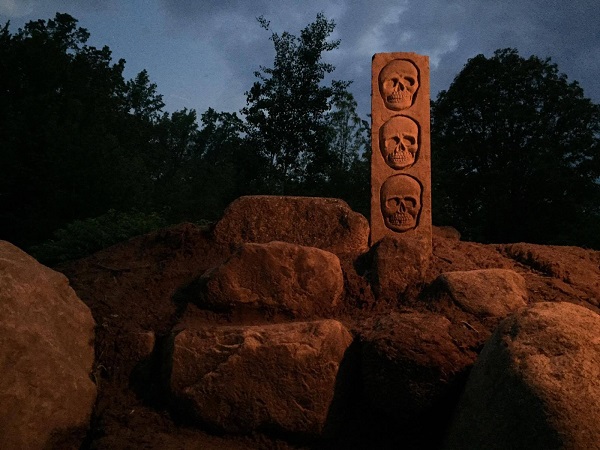
The Mound at Wellspring
Also, known as the Mound Shrine for the Ancestors, the Mound at Well Spring is in the style of a pre-historic burial mound like those used by the Celts, Germans and Norse tribes of Western Europe among others. There have been discoveries of burial mounds all over the world, including the Americas. These burial mounds were not just simple piles of stones and dirt, they were intricate layers of intentionally placed materials which stood the test of time and erosion becoming part of the landscape. Just like a traditional burial mound, the Mound at Wellspring was started with a hole, since this is a shrine for the ancestors and not the burial of a specific person the objects interred were of a sacrificial and offeratory nature. Interred in the depths of the mound was a beautifully made wooden coffin that was filled with sacred objects, magical tools and a multitude of arcane talismans. A funerary ritual was of course part of its internment ceremony, gifting these objects to the ancestors asking for their blessings and guidance.
Large boulders set in a circle, smaller stones and soil were meticulously layered over the tomb as the mound was formed. The builders also included an offering shaft that would lead to the depths of the mound so that libations and other sacrifices could be sent down to the spirits. By stacking hollow blocks and filling in the mound around them they were able to ingeniously create a long dark shaft that would run all the way to the heart of the mound. After its completion the last layer of soil was ceremonially stomped down by many individual feet as people were invited to dance upon and walk the mount, eventually creating a flat surface on its top large enough to hold rituals.
The final offering to the ancestral spirits of our traditions was a gorgeous stone obelisk carved with three skulls. This piece was created for Tredara by Sidney Bolam of Bohemian Hobbit Studio, in honor of the spirits and the work being done at Tredara.
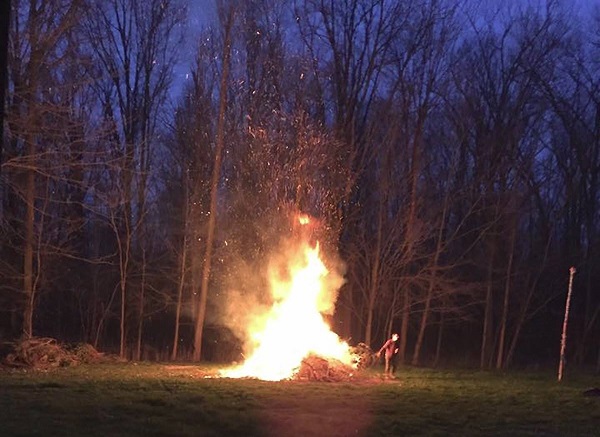
The Spirit of the Land
Tredara has become a special place to many people. It is near and dear to many individuals hearts after having worked to make it what it is today. With all of the love and devotion that goes into bringing something like this to fruition it will no doubt continue to grow eventually becoming an indispensable place of pilgrimage for Pagans, polytheists, and all those who wish to honor nature.
“Tredara is not only my church, but my solace, my healing place, my serenity. The land is blessed, sacred, and spiritual. The owners and other people are what makes this place full of positive energy; laughter, education, and great story telling. This is my special place.” – Cathy McCoy
The Pagan gods of old, and the spirits of the land known as the genus loci are present at Tredara. Honoring these spirits and divinities is a central part of Pagan spiritual practice. The Nemeton Shrine is the place at Tredara that is dedicated to the old gods. A nemeton is inspired by celtic ritual spaces, which may also have origins in the fire altars of ancient Greece and Rome. It is comprised of the pillar, which represents the axis mundi connecting us to the gods, the offering shaft and nemeton fire. Archaeological finds tell us that Celtic peoples used large scale offering shafts for larger sacrifices. The offering shaft is part of the symbolic “well” complex seen as the shaft that receives the offerings of the Underworld. This is the reason that bogs, marshes and caves were seen as sacred entrances into the depths of the under realms of ancestors and sprits. The nemeton fire which serves as one of the focal points of the altar also follows traditional European proscriptions. The fire altar being made of brick or stone is then filled with sand or soil so that the fire itself is raised above the ground. This is where burned offerings are sent up to the celestial gods and libations are fed down to those chthonic earthly beings.
The third and most recent addition to the shrine complex at Tredara, is the Shrine for the Landspirits. It is a traditional tricephalus like those of the three-faced Hekataion placed at the crossroads to receive offerings to the goddess Hecate. This tricephalus or three-headed pole bears the visages of the green-man, the owl and the bear all sacred to the tradition and local area itself. The striking images of the Landwight’s Shrine was carved by local chainsaw carver, Bob Anderson of Rock Creek Ohio.
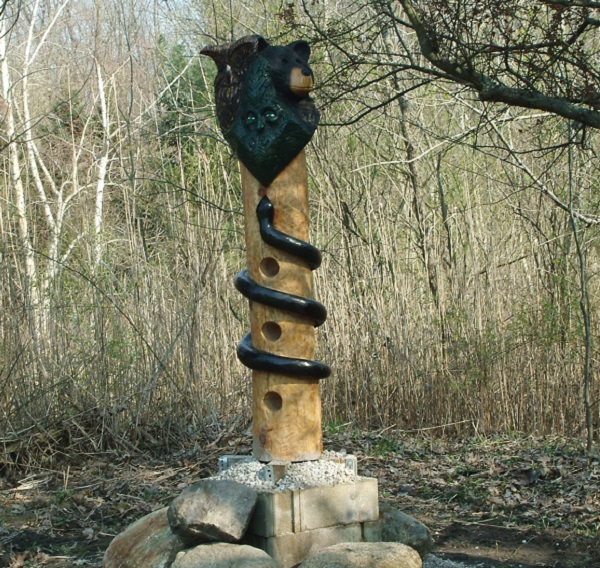
Tredara looks like it would be a breathtaking place to visit any time of the year. Attending one of their larger rituals on one of the Pagan Holy Days would be an amazing experience in itself, or simply walking the land and individually connecting with the spirit of this place. As Tredara continues its existence I’m sure more shrines will be built and more spirits will seek refuge in this sanctuary away from modern society. I consider myself very lucky to only be a few hours away from this place, and hope to make the drive very soon so that I may experience this first hand.


